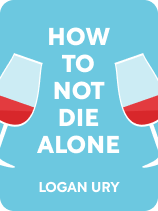

This article is an excerpt from the Shortform book guide to "How to Not Die Alone" by Logan Ury. Shortform has the world's best summaries and analyses of books you should be reading.
Like this article? Sign up for a free trial here.
What is your approach to dating? Are you the kind of person who is easily swept off your feet? Or do you approach dating strategically, trying to keep a cool head?
According to dating coach Logan Ury, there are three “dating tendencies” or patterns people have: maximizers, romanticizers, and hesitaters. In her book How to Not Die Alone, she explains how each pattern leads to unhappiness—and how to prevent your own pattern from sabotaging your dating life.
Keep reading to learn about the three unhealthy dating patterns that people fall into when looking for love.
How Maximizers Behave
The first dating pattern is the maximizer. Ury explains that if you’re a maximizer, you want to be 100% sure you’ve made the right decision—so you do as much research as possible before choosing anything.
Unfortunately, Ury explains, maximizing often leads to unhappiness—mainly because it causes so much stress. You’ll date several people but struggle to commit to someone because you’re worried about missing out on someone better. And even if you do commit, you’ll torture yourself wondering if you made the right decision.
What to do instead: Ury recommends that maximizers learn to “satisfice:” Find and commit to someone who meets your standards, even if they aren’t perfect. Doing so will make you happier for two main reasons: First, you’ll mitigate the stress of maximizing during the selection process because you’ll have clear standards by which to evaluate your choices. Second, by fully committing to your partner, you’ll avoid the stress of wondering whether you made the right choice after you’ve already selected someone because of a neurological phenomenon known as rationalization: If you finalize a decision (like selecting a partner), your brain will convince you that you’ve made the right choice.
To satisfice effectively when dating, Ury recommends using an algorithm: Explore without committing for the first 37% of your dating life, then commit to the next top pick you see.
To do so, first find your Exploration Limit Age: [(Age You Want to Get Married – Age You Started Dating) x .37] + (Age You Started Dating). For example, if you want to get married at 28 and you started dating at 18, your exploration limit age would be 21.7. Once you reach your exploration limit age, review your partners and determine which partner you liked the best. (If you’ve already passed that age, review the partners you dated before you reached that age.) Commit to the next person you date whom you like better than your favorite ex-partner.
By following this formula, Ury explains, you’ll date enough people to know what kind of partner you want—but you won’t date so long that you miss out on all the good potential partners before they leave the dating pool.
How Romanticizers Behave
The second dating pattern is the romanticizer. Ury explains that if you’re a romanticizer, you approach dating with an attitude that your relationship happiness depends on whom you’re dating.
Ury explains that approaching dating with this attitude also causes problems. Notably, romanticizers tend to envision their ideal soulmate—so when dating, they may overlook great candidates who don’t exactly match this ideal. Additionally, romanticizers believe that finding a good partner guarantees a blissful, problem-free relationship. So when their relationship inevitably hits a rough patch, they assume they’re with the wrong person and start to look for someone else, beginning the cycle anew.
What to do instead: If you’re a romanticizer, Ury recommends that you shift your attitude and develop a mindset that a happy relationship depends on how hard you work at it. With this mindset, you’ll temper your expectations regarding what your soulmate is like and thus grow more open to dating great people who don’t match your ideal. And you’ll realize that all relationships have some issues, so you’ll be willing to work on them when they inevitably arise.
How Hesitaters Behave
The third dating pattern is the hesitater. Ury explains that if you’re a hesitater, you want to date but don’t take any steps toward finding a long-term partner because you don’t feel confident dating. Instead, you’ll repeatedly insist that you’ll start dating “when X happens”—whether X is financial stability or a better haircut.
However, Ury contends that hesitaters fare poorly in the long run because they forfeit two big learning opportunities. First, dating involves a particular skill set—such as an ability to communicate well. If you delay dating, you never develop these skills, so you never learn how to date effectively. Second, you can only learn what you prefer in a long-term partner by dating several different people: For example, someone intrigued by non-monogamy may discover that they don’t enjoy it as much as they expected. If you don’t date, you don’t discover what you actually want.
So if you’re a hesitater, Ury recommends that you just start dating. This may be difficult since humans suffer from what behavioral scientists call an “intention-action gap”—a disconnect between what we want to do and what we do in reality. One main strategy to overcome this disconnect is to set a deadline to start dating—one that’s short enough to spur you into action but far enough away that you can prepare. Ury recommends setting a deadline three weeks from today.

———End of Preview———
Like what you just read? Read the rest of the world's best book summary and analysis of Logan Ury's "How to Not Die Alone" at Shortform.
Here's what you'll find in our full How to Not Die Alone summary:
- A science-backed approach for finding the true love you’ve always wanted
- How your patterns may be sabotaging your quest for true love
- How to effectively navigate the twists and turns of a relationship






